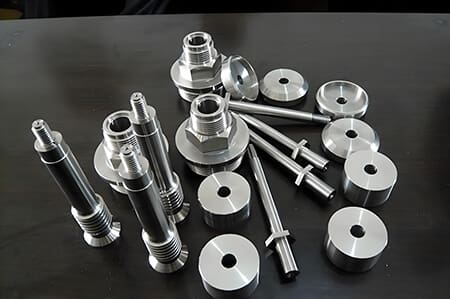Tips for Working With Aluminum on Your CNC Router Table
Aluminum is a popular choice in CNC machining. Its versatility, strength, and lightweight qualities make it ideal for many industries. However, machining aluminum requires attention to detail. At CAPtec, we understand that efficiency and quality are essential. Here are professional tips to help you work smoothly with aluminum on your CNC router.

1. Choosing the Right Tooling
Selecting proper tools is essential for precise results. Aluminum is softer than steel, but it requires specific tools. High-speed steel (HSS) or carbide tools are ideal due to their durability. Carbide tools, in particular, offer longer tool life, especially for high-production work. Keep your tools sharp. Dull tools create rough finishes and may lead to work hardening, impacting accuracy.
2. Lubrication and Cooling
Aluminum has a lower melting point, so it can heat up fast during machining. This heat can cause aluminum to stick to the tool, affecting the cut quality. To avoid this, use a coolant or lubricant during the process. Mist or flood cooling keeps the material cool and reduces friction. Proper cooling improves tool life, prevents chips from clogging, and maintains a smoother finish.
3. Feed Rate and Spindle Speed
Setting correct feed rates and spindle speeds is crucial. Aluminum requires a high spindle speed, but be cautious not to set it too high, as this can cause material overheating. For the best results, use a slightly lower feed rate than what you would use for softer materials. Fine-tuning these speeds enhances surface quality, improves machining time, and prevents tool wear.
4. Chip Removal and Chip Load
Managing aluminum chips is essential to keep cuts smooth and prevent damage. Chips can clog the cutting path, so ensure they are efficiently removed. A higher chip load also reduces the likelihood of work hardening. To keep chips clear, use compressed air or a vacuum system.
5. Fixture Setup and Workpiece Stability
Securely positioning aluminum workpieces ensures precision. Aluminum sheets or blocks can vibrate, which may lead to inaccuracies. Use a strong vacuum or mechanical clamps to hold the workpiece tightly. Stability reduces vibration, enhances cut precision, and protects both the tool and material.
6. Surface Finishing
After machining, aluminum may need additional surface finishing. Sandblasting, polishing, or anodizing are common treatments to give it a refined look and additional durability. A polished or anodized finish also improves corrosion resistance. CAPtec offers anodizing options for aluminum parts, enhancing durability and adding aesthetic appeal.
7. Conclusion: Partner with CAPtec for Superior Results
Working with aluminum on a CNC router table requires attention to detail and the right techniques. By focusing on tooling, cooling, and proper feed rates, you can achieve professional results. At CAPtec, we bring expertise and quality control to every project, ensuring your CNC machining needs are met with precision and efficiency.
Contact us today to see how our CNC solutions can elevate your aluminum machining projects.